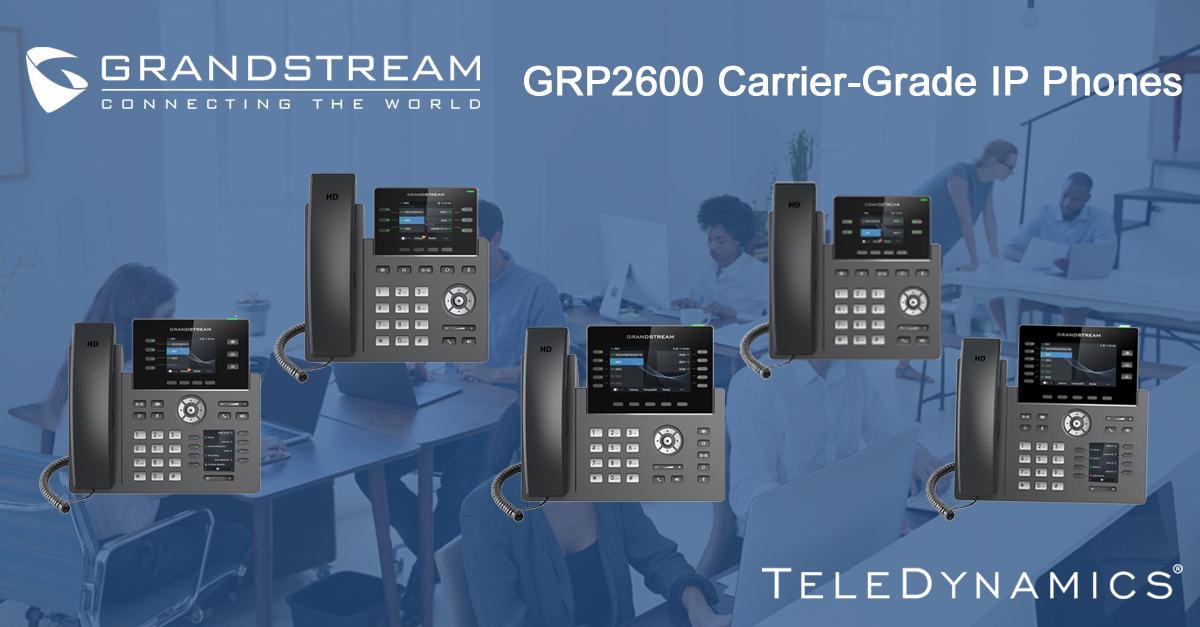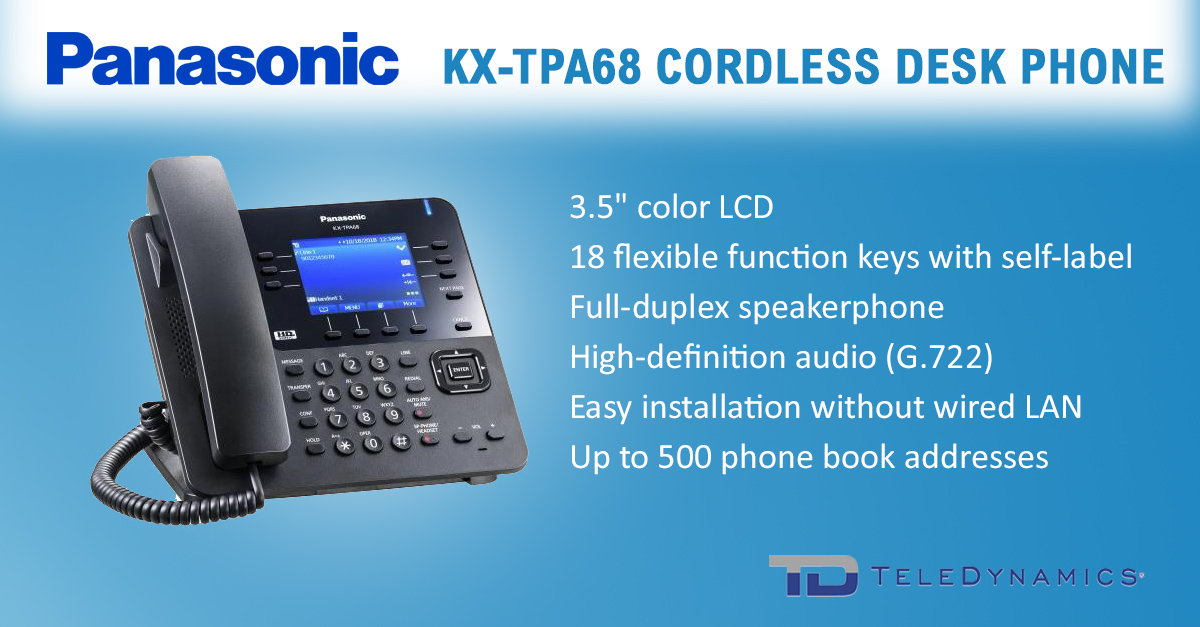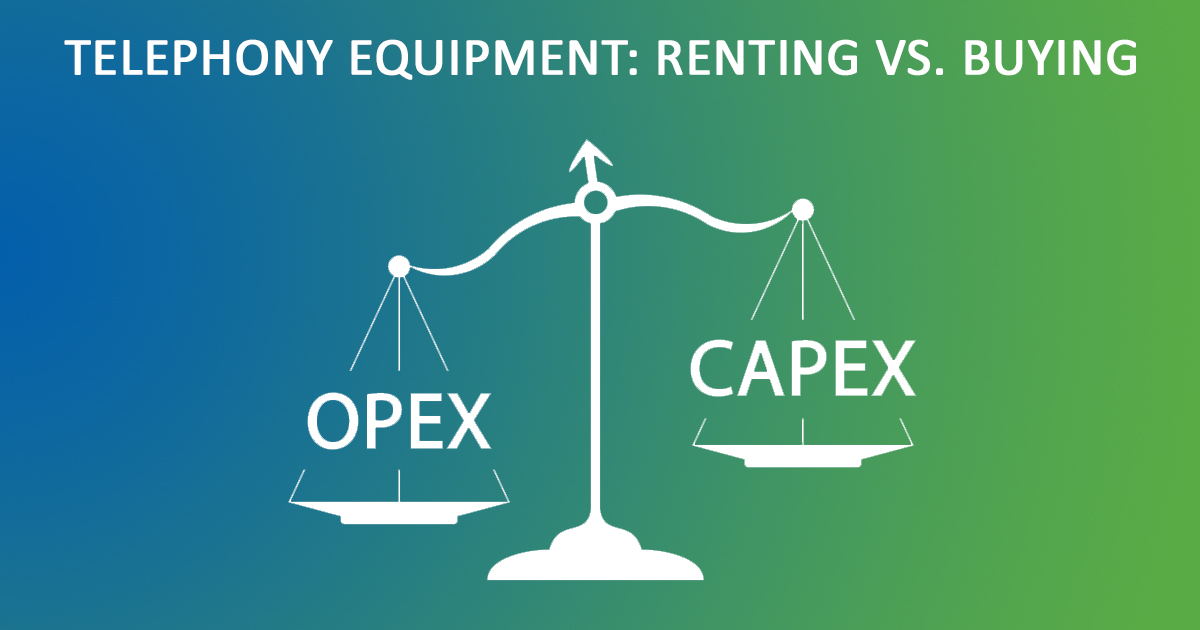Last week, TeleDynamics CTO Daniel Noworatzky joined Doug Green, publisher of Telecom Reseller, for a special podcast for the Cloud Communications Alliance and TR Publications. Among other topics, they discussed today's Cloud Communications Alliance (CCA) virtual event (this is a not-to-miss free online event happening today, May 27! Details on how to attend are included in this article). They also touched upon some of the innovative ways TeleDynamics supports our customers with their cloud communications needs. Keep reading for the highlights and for a link to listen to the full podcast.
TeleDynamics Think Tank
How TeleDynamics facilitates cloud communications
Topics: Customer Service, Business Telephone System, Cloud, Events, Business Strategy, News, Unified Communications
Most modern IP phones today support Power over Ethernet (PoE), an almost magical technology that powers your IP phone via the same Ethernet cable that connects it to the network. While it may seem simple on the surface, PoE technology is actually quite sophisticated, and is worth understanding when making choices involving network design or IP telephony hardware.
Topics: Business Telephone System, Network Design, Switches
If you are a voice network engineer, then it has probably happened to you. Your SIP server is all set up and you have plugged in your IP phone. Its lights come on, its screen is activated, you see the loading icon rotating, and then… nothing. For some reason, the phone will not register.
IP phone registration issues are, unfortunately, not uncommon. In this article, we examine the most common causes of registration failures, and best practices for troubleshooting and resolving them.
Topics: SIP Phones, IP PBX, Business Telephone System, SIP, Troubleshooting, Firewall, Protocols & codecs
Troubleshooting poor voice quality on VoIP systems
One of the most challenging problems that you may face as a voice engineer is dealing with poor voice quality on VoIP systems. It’s often much easier to deal with problems where something stops working completely, rather than trying to resolve an intermittent fault such as bad voice quality.
Many things can cause poor voice quality, and the methodology to investigate those causes is not always readily clear. In this article, we’ll share some tips on where to start and what to do, so that you can quickly identify and diagnose the problem.
Topics: Business Telephone System, VoIP, Troubleshooting
What’s exceptional about Grandstream’s GRP2600 carrier-grade IP phones
Grandstream’s GRP2600 series of carrier-grade IP desk phones offers a range of reliable, high-performance IP endpoints to cover virtually any business telephone need, from entry-level phones all the way up to devices for high-call-volume users. In this article we review the five models in the series.
Topics: SIP Phones, Business Telephone System, SIP, Grandstream, Product Review
Review of Panasonic's modern KX-TPA68 cordless desk phone
In this article we take a look at the Panasonic KX-TPA68 SIP-DECT cordless desk phone, a next-generation cordless communication terminal designed for the KX-TGP600 SIP-DECT cordless phone system. Keep reading to learn about some of the features that makes this modern and elegant desk phone ideal for all types of small to medium-sized businesses.
Topics: Business Telephone System, SIP, Mobility (including remote work), Cordless, DECT, Product Review, Panasonic
Private, public and hybrid cloud deployments for VoIP services
The cloud is used to offer services directly to the end user, as well as to provide a platform on which vendors can develop their online applications (including VoIP) for their customers. In a previous article, we covered SaaS, PaaS and IaaS as the three most prominent cloud-based models that are used to offer services to clients. In this article, we take a more in-depth look at the various cloud deployment models that are available (including private, public and hybrid) and how they are useful for businesses of different sizes. The article concludes with the factors to consider when choosing which deployment model to use when offering VoIP and other cloud services to your customers.
Topics: Customer Service, Business Telephone System, VoIP, Total Voice Solution, Trends, Cloud, Business Strategy, Unified Communications
VoIP products and services for micro-enterprises
If you’re looking to grow your business, consider serving micro-enterprises with 1-20 employees. According to the Census Bureau’s Annual Survey of Entrepreneurs, firms with between 1-20 employees made up 89% of all U.S. firms in 2016. While this has traditionally been an underserved market when it comes to VoIP telecommunications, more and more equipment manufacturers are offering products tailored to their needs. In this article, we review some cutting-edge devices that are ideal for micro-enterprises.
Topics: Customer Service, SIP Phones, IP PBX, Business Telephone System, VoIP, Grandstream, Yealink, Trends, Mobility (including remote work), Headsets, Leasing, Videoconferencing, Conferencing, Android, Product Review, Business Strategy, Bluetooth, Yeastar, Avaya
Turn your equipment costs into an OpEx using a DaaS model
Device as a service (DaaS) is a growing trend for all types of companies who don’t want to tie up their capital in business equipment. With DaaS, you rent the equipment for a small monthly fee without having to pay anything up front, and the monthly payments count as an operating expense rather than as a capital expense.
Offering a DaaS equipment rental program to your customers is a great way to provide equipment for companies who might not have the budget allocated to buy equipment, or who would prefer to account for the expense as an operating expense. In this article, we show you how you can easily offer a DaaS rental program to your customers.
Topics: Customer Service, Business Telephone System, Total Voice Solution, Trends
Three elements of a great interactive voice response (IVR)
Note from TeleDynamics: Allison Smith will be at our booth (#1472) at Channel Partners in Las Vegas on Wednesday, April 10, 2019 from 4-7 p.m. to answer your questions about IVR best practices and about how to offer professionally voiced greetings to your customers. Also, get a free, professionally voiced opening IVR greeting for every IP PBX you buy from TeleDynamics through June 30, 2019. See details below.
By Allison Smith, The IVR Voice.com
When clients send me IVR trees to voice, the scripts are already written, usually very methodically crafted, and debated over – even hotly contested among groups of decision makers within companies. In extreme cases, the script has even made its way through the legal department for final approval.
It’s a rare thing when prospective clients approach me before the script is written. When they do, I implore them to be clear on a few things before they write the first word of their phone tree.
Topics: Customer Service, Business Telephone System, VoIP, Total Voice Solution
Welcome to our Think Tank
In this blog you'll read our thoughts on business telephone systems. While a lot has changed in telecom since TeleDynamics was founded in 1981, we remain as committed as ever to delivering the best customer service in the industry.
If you would like elaboration on a specific topic, please let us know in the comments section.
Happy reading and thanks for stopping by!
Receive New Articles by Email

Recent Posts
- Voice vs. video: why VoIP calls still hold their ground
- Inside Yeastar Day 2025: big updates, bold AI features, and what’s next
- Wi-Fi 7: the new standard for speed, capacity, and reliability
- Smarter collaboration: how AI is transforming UC
- Big sound, small size: Yealink's ultra-portable SP9x speakerphones
Posts by Topic
- 5G
- AI
- Android
- Avaya
- Bluetooth
- Boom Collaboration
- Business Continuity
- Business Strategy
- Business Telephone System
- Case Study
- Catalog
- Cisco
- Cloud
- Collaboration
- Communication
- Conferencing
- Cordless
- CPaaS
- Customer Service
- Customer Success Story
- CyberData
- DECT
- E911
- Events
- Facility Management
- Firewall
- Firmware Upgrades
- FoIP
- Gateway
- Grandstream
- Headsets
- Home Security
- IoT
- IP PBX
- Jabra
- Konftel
- Leasing
- Microsoft
- Mobile
- Mobility (including remote work)
- NEC
- Network Design
- Network Infrastructure
- Network Security
- News
- OTT VOIP
- Outsourcing
- Panasonic
- Peripherals
- PoE
- Polycom
- Power Management
- Product Review
- Productivity
- Protocols & codecs
- QoS
- Regulations
- Routers
- SD-WAN
- SIP
- SIP Phones
- Snom
- Software Integration
- Surveillance
- Switches
- Total Voice Solution
- TP-Link
- Trends
- Troubleshooting
- UCaaS
- Unified Communications
- Videoconferencing
- VLAN
- Voicemail
- VoIP
- VoWi-Fi
- VTech
- WAN Technology
- Wi-Fi
- Wireless
- WISP
- Yealink
- Yeastar
- Zoom
















